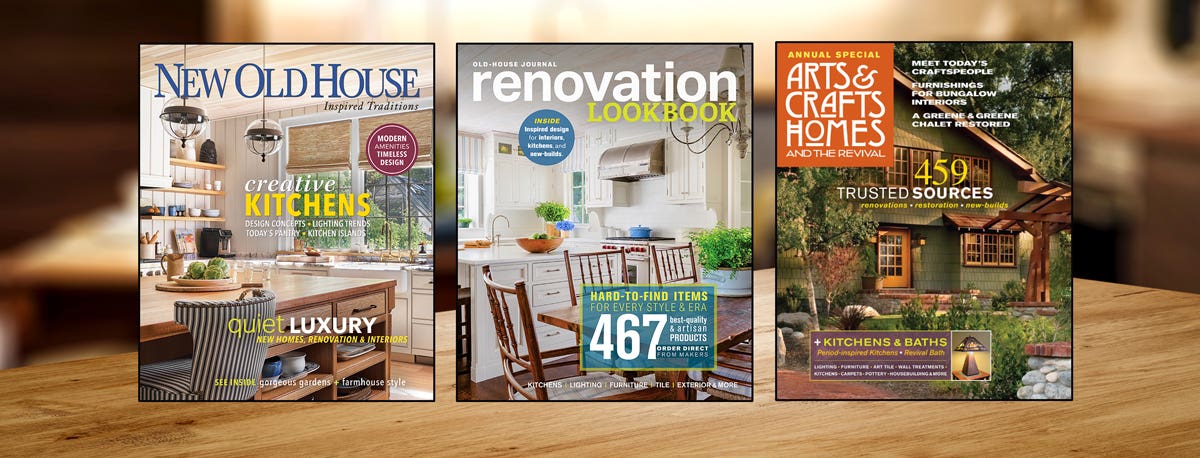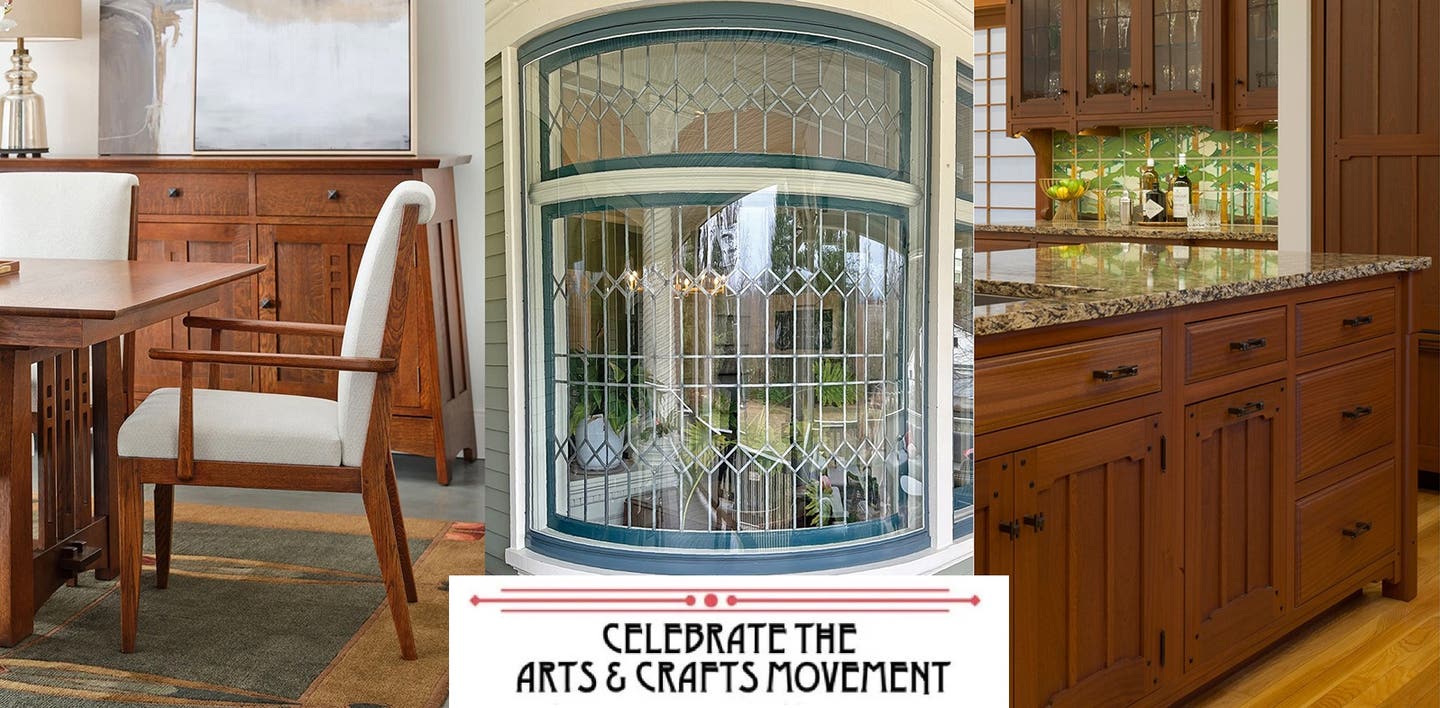The Guild: Archive Edition Textiles
Where would we be without the beautifully woven fabrics selected for reproduction by Paul Freeman? He’s joined by Arts & Crafts collector Karl Eulberg for the next step.
He had been buying and selling antique textiles for more than 15 years when Paul Freeman began toying with the idea of reproducing Arts & Crafts textiles. A regular attendee at the Arts & Crafts Conference at the Grove Park Inn in Asheville, Paul explains that “people used to come in looking for textiles suitable for old Stickley pieces and so on.”
Antique upholstery-weight textiles were hard to come by and usually fell short in other ways. So Freeman went on a quest for an American mill he could persuade to produce Arts & Crafts textiles—no luck. Then he decided to approach a few mills with a proposal to re-create fabrics from his own archives. Freeman found a faded version of what is now a best seller, ‘Celtic Knot’, at the Pier Antiques Show in New York. “It was very expensive,” he says, “but the design was just killer.” The Archibald Knox pattern was also recognizably Arts & Crafts. “I decided then and there it would be my first [reproduction] design.”
Freeman struck a deal with a now-defunct mill in Pennsylvania to produce ‘Celtic Knot’ and a handful of other patterns he had collected over the years, most of them by anonymous period designers. The mill owner offered to weave Freeman’s first Arts & Crafts collection in exchange for the right to produce a few other fabrics that came from Freeman’s personal archive. And Archive Edition was born.
He attributes the success of the business to those years spent collecting, While other texiles collectors were buying embroidery, Freeman preferred upholstery fabrics, both hand- and machine-woven, which he pursued voraciously.
“An archive is a library of a period that defines color and design,” Freeman says. “Because of the entirety of my collection, it’s easy for me to define the Arts & Crafts designs that were produced during that period of time.”
For the first dozen years, Archive Edition produced Arts & Crafts designs exclusively. That’s changed, with Art Deco and other styles now offered. “The market has broadened, and we’re dealing with a lot of designers who appreciate that we know
what we’re doing.”
A Slow Transition
About three years ago, Paul Freeman decided he wanted to retire. His long-time office manager, the indispensible Nancy Eaton, had left to care for her aging parents in Maine. “She remembers every customer I ever sold anything to, and often what they bought,” says Freeman. “Without Nancy, maybe I could have done it ...but I needed a hand to hold.”
So Freeman formed a partnership with Karl Eulberg, a furniture maker adept at sales and marketing and with a love for Arts & Crafts. Karl’s sister, Krista Eulberg, helped bring the company into the 21st century with tech, before moving on about a year ago. Freeman expected to sell the company to Eulberg, but he changed his mind. Intending to move to Costa Rica, he found he couldn’t give up the Venice Beach drum circle held every weekend.
Freeman continues to develop new patterns—usually one or two a year—and provide the necessary liaison with mills in the U.S. and Europe that produce Archive Edition’s patterns. Karl handles the business end: “It’s a good partnership.”
Hanging by a Thread
Reproducing textiles is a tricky process dependent on the capabilities and limitations of historic mills now few and far between. When Freeman finds one willing to work with him, “I ship them a fabric with color suggestions, and they come back to tell me what they can do in terms of machinery and the threads they carry and the warps they use.”
Just like in the old days, the mill hires a textile artist to draw up the design in such a way that the machinery can make it, then orders thread. Accustomed to following trends in fashion, which change every year or two, “the mills buy a ton of thread, but when it’s used up, they drop the pattern.” And even trusted mills tend to go out of business, forcing Freeman to look as far afield as Europe to produce certain designs. He may end up producing his own fabrics.
Paul Freeman
Karl Eurlberg
Archive Edition Textiles
Hawthorne, CA
(310) 676-2424
archiveedition.com
Mary Ellen Polson is a creative content editor and technical writer with over 20 years experience producing heavily illustrated know how and service journalism articles, full-length books, product copy, tips, Q&As, etc., on home renovation, design, and outdoor spaces.







